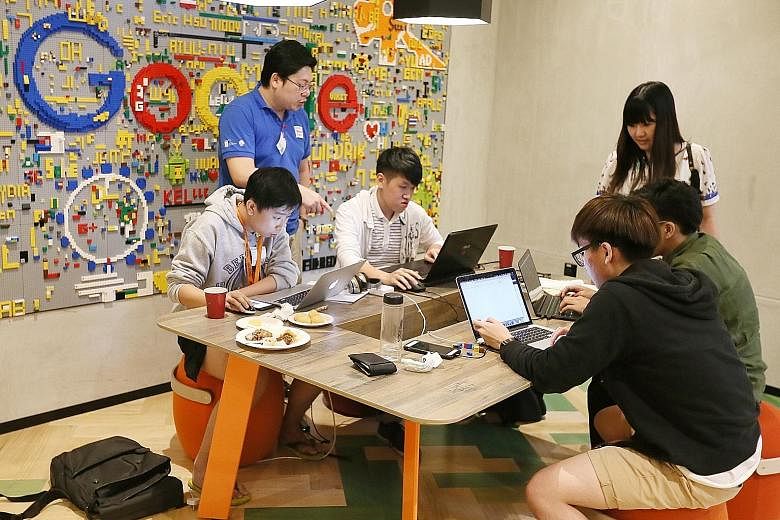Just install an extension on your Internet browser while you are surfing and a colour-coded button will tell you how likely what you are reading is fake.
That was the winning idea from a Singapore University of Technology and Design (SUTD) team at a competition earlier this month organised by the National University of Singapore, SUTD, Google and the Media Literacy Council.
The hackathon, aimed at coming up with ways to fight the scourge of misinformation online, is an example of ground-up efforts in Singapore amid rising awareness of the problem of fake news, although the Government and mainstream media are at the vanguard of the fight.
In Singapore, where Internet penetration is at 82 per cent, and seven out of 10 people use social media, the danger of misinformation is real. For now, there have been no reported cases of bogus articles causing actual physical harm, but Home Affairs and Law Minister K. Shanmugam said earlier this year that Singapore remains "particularly vulnerable" to foreign influences harnessing misinformation for their own ends.
Announcing plans for legislation against fake news at a forum on the issue, he said the country faces the risk of fake news being used to exploit racial and religious fault lines.
"If the distrust becomes deep rooted, people will have serious doubts about institutions, about governance, and you then get a fractured polity," he said.
SUTD Professor of Media and Communications Lim Sun Sun says Singaporeans are vulnerable to the spread of phoney news by dint of being so well connected.

Also, "there's evidence to show that when people receive news in a social setting, they let their guard down because they think people in their network would have detected it by now if it was fake", she says.
At the hackathon, the winning project was an extension for use with Google's Chrome Internet browser that tells people how reliable an article is - through a little button on the browser window that turns green, orange or red - as people are surfing the Internet.
The team led by SUTD first-year engineering student Timothy Liu first created a database of 6,000 articles culled from Singapore news sources, then used a machine-learning algorithm to interpret the credibility of the articles, based on the language used. "The language, whether it is emotional or biased, is a proxy for how subjective an article is," says Mr Liu, 21.
For another group of SUTD students, fighting fake news is best done through psychological warfare. They theorised that young people would feel embarrassed about being called out on social media for sharing a bogus article.
They suggested that credible media outlets should have a channel on their websites to flag to readers when a piece of information is being verified, then set the record straight once they have an answer, and provide an archive so it is easier for people to check back.
"If I share something and my friend checks and says it hasn't been verified, I will feel quite ashamed," says mechanical engineering undergraduate Parekh Shalv Amit, 22, who was part of the group. "What we hope is that this will create a culture where people check before sharing."



